FREESKY Blogs
Stay updated with the latest news, tips, and insights on e-bikes, technology, and sustainable riding through the FREESKY blog.
There's no item in your cart.
You May Also Like
You're Saving C$0.00
Shipping, taxes, and discount codes calculated at checkout.All Topics


Essential Tips for Safe and Enjoyable Light Off-Road Cycling
Apr 30, 2025
Light off-road cycling is an exciting way to explore the outdoors, but it requires careful preparation to ensure safety and a smooth ride. Whether you're cycling through dirt trails, gravel roads, or forest paths, here are some key tips to make your off-road experience both enjoyable and secure. 1. Choose the Right Gear Bike Setup: Make sure your e-bike is equipped with a good suspension system, especially front and rear shocks, to cushion the bumps of off-road terrain. Wide tires (like 26-inch fat tires) provide better grip and stability, which is essential for uneven surfaces. Protective Gear: Always wear essential protective gear such as a helmet, knee pads, and gloves to prevent injury in case of a fall or impact. 2. Plan Your Route Know the Terrain: For light off-road cycling, stick to dirt paths, gravel roads, or small trails in the woods. Avoid overly steep or complex terrains that may be too challenging. Pre-Ride Survey: Familiarize yourself with potential obstacles along the route, such as potholes, puddles, or tree roots. This will help you adjust your speed and strategy to avoid hazards. 3. Control Your Speed Downhill Riding: When going downhill, control your speed to prevent losing control. On steeper descents, use a combination of brakes and motor assist to maintain a steady pace. Avoid Sudden Movements: Avoid sudden acceleration or hard braking, as this can put unnecessary strain on your bike and increase the risk of losing control. 4. Monitor Weather and Surface Conditions Weather Awareness: It's best to avoid riding in rainy weather or on wet surfaces, as these conditions can reduce tire grip and increase the risk of slipping. Obstacle Awareness: Pay attention to obstacles such as rocks, sticks, or branches on the trail. Slow down as you approach them and either steer around them or choose a smoother path. 5. Regular Bike Check and Maintenance Pre-Ride Check: Before heading out, inspect your bike for any issues. Check the brakes, tire pressure, battery charge, and suspension system to ensure everything is functioning properly. Post-Ride Maintenance: After your ride, clean the bike thoroughly, especially the drivetrain and motor areas, to remove dirt and debris. This will help prolong the life of your e-bike. 6. Cycling Techniques Climbing Hills: When riding uphill, shift your body weight forward to improve the grip on the front wheel. This will help you maintain balance and traction. Descending Hills: When going downhill, lean back slightly to maintain control over the bike. This helps distribute your weight and keeps the bike steady. Handling Obstacles: For small obstacles, such as rocks or roots, gently pull up on the handlebars or stand while riding. This reduces the impact and prevents jarring your bike. Final Thoughts By following these simple yet essential tips, you can enjoy a safe and rewarding light off-road cycling experience. Always choose a route that matches your skill level, ensure your bike is well-maintained, and use appropriate protective gear. With the right preparation and skills, your off-road adventures can be fun, thrilling, and, most importantly, safe.
Read More
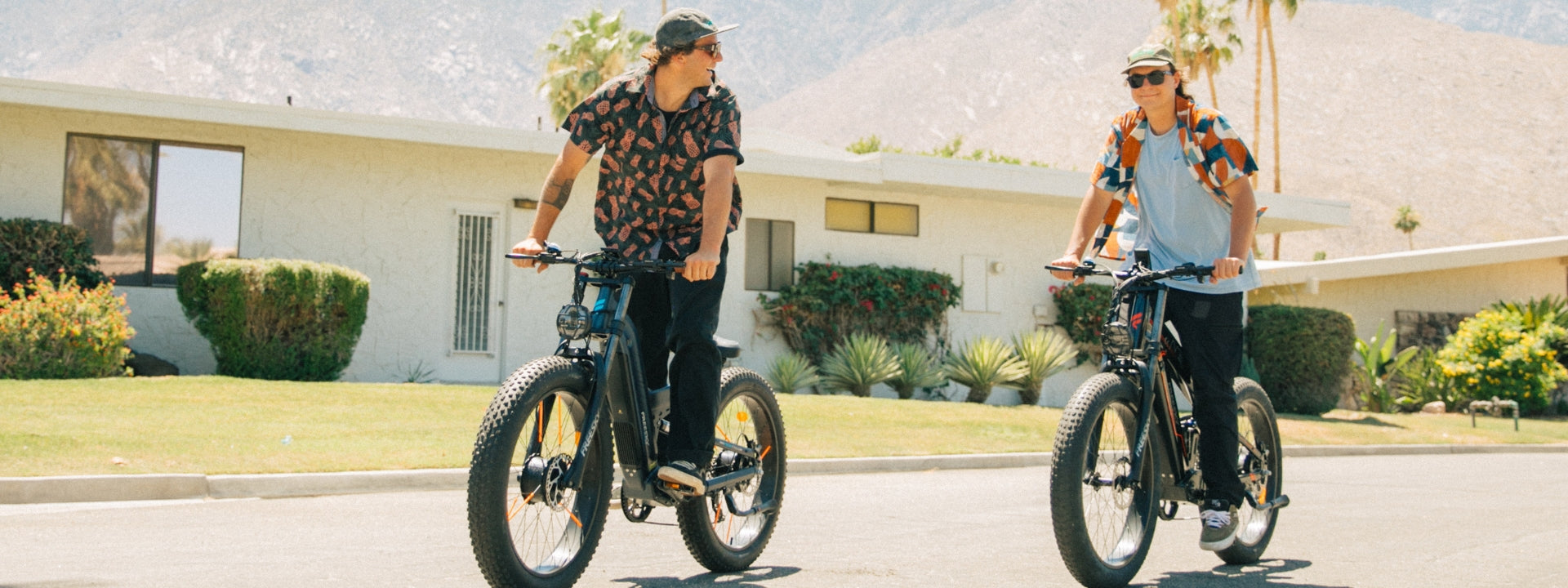
Alaska Pro M-520 vs. Warrior Pro M-530: Which E-Bike Reigns Supreme for Your Adventures?
Apr 25, 2025
Electric bikes have revolutionized how we explore the world, blending power, endurance, and innovation. Two standout models—the Alaska Pro M-520 and the Warrior Pro M-530—are making waves in the e-bike market. But which one is right for you? Let’s dive into their unique strengths to help you decide. 1. Battery & Range: Endurance vs. Flexibility Alaska Pro M-520The Alaska M-520 shines with its Dual Energy System, combining a 48V 41Ah dual-battery setup (18Ah + 23Ah). This powerhouse delivers an unmatched 90-160 miles per charge, perfect for marathon commutes or multi-day outdoor adventures. With a quick 6-8 hour recharge time, it’s built for riders who refuse to let range anxiety hold them back. Warrior Pro M-530The Warrior Pro M-530 opts for a 48V 30Ah SAMSUNG lithium battery with advanced BMS technology. It offers 60-95 miles in single-motor mode or 40-60 miles in dual-motor mode, striking a balance between range and performance. While its 10-hour charge time is longer, the 1440Wh capacity ensures reliable power for shorter, high-intensity rides. Verdict: Choose the Alaska for ultra-long distances; the Warrior for flexible power modes. 2. Motor & Performance: Speed vs. Raw Power Alaska Pro M-520A 1200W rear hub motor drives the Alaska, delivering 130 N·m of torque and speeds up to 38 MPH with pedal assist (20 MPH throttle-only). This motor excels on mixed terrain—snow, sand, or mountain trails—making it a versatile beast for thrill-seekers. Warrior Pro M-530The Warrior doubles down with a 2000W dual-motor system (front and rear 1000W hubs). Independently controlled via handlebar buttons, this setup offers smoother acceleration, reduced strain on individual motors, and unmatched hill-climbing prowess. It’s built for riders craving brute force on technical trails or steep inclines. Verdict: The Alaska is a speed demon; the Warrior is a torque monster. 3. Suspension & Brakes: Comfort Meets Control Alaska Pro M-520Both bikes feature dual suspension systems, but the Alaska adds lockable, adjustable front hydraulic downhill forks and rear suspension for plush rides. Paired with dual hydraulic disc brakes, it ensures confident stops on slippery or uneven surfaces. Warrior Pro M-530The Warrior matches the Alaska’s suspension setup but emphasizes stability under heavy loads (thanks to dual motors). While it doesn’t explicitly highlight brakes, its dual suspension promises a similarly smooth ride over rough terrain. Verdict: Tie on comfort, but Alaska edges ahead with explicit brake focus. 4. Ideal Riders: Who Should Choose Which? Alaska Pro M-520 Best for: Long-distance commuters, bikepacking enthusiasts, and riders prioritizing range over raw power. Why? Its dual battery and efficient motor make it a marathoner’s dream. Warrior Pro M-530 Best for: Off-road warriors, adrenaline junkies, and those tackling steep, technical terrain. Why? Dual motors and Samsung battery tech deliver explosive power for short, intense adventures. Final Thoughts The Alaska Pro M-520 and Warrior Pro M-530 cater to different tribes of riders. If your heart beats for cross-country journeys and all-day rides, the Alaska’s unmatched range and balanced performance will fuel your wanderlust. But if conquering rocky trails, steep hills, and muddy paths gets your adrenaline pumping, the Warrior’s dual-motor muscle and rugged design will be your ultimate sidekick. Whichever you choose, both e-bikes promise to transform how you ride—blurring the line between transportation and pure, unbridled adventure. Ready to ride? Your next epic journey starts here. 🚵♂️⚡
Read More
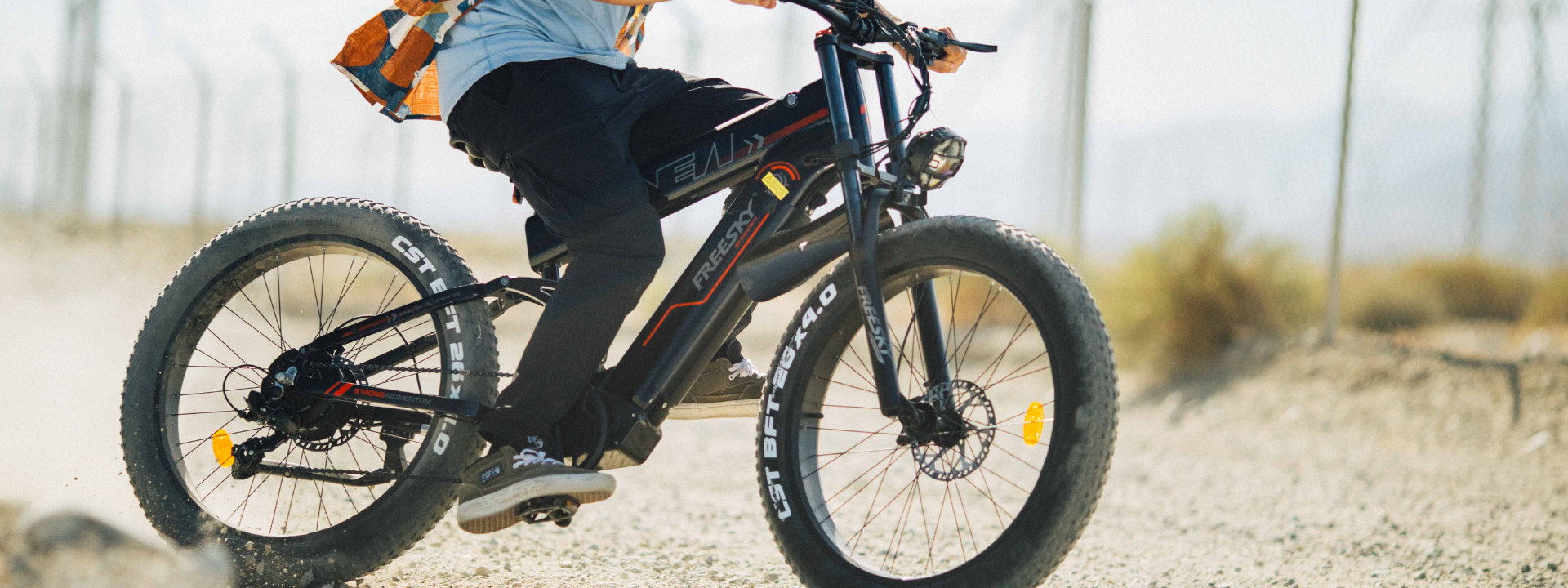
Multi-Speed Ebikes: The Ultimate Fusion of Power, Efficiency, and Versatility
Apr 22, 2025
Electric bikes (ebikes) have revolutionized urban commuting and outdoor adventures, offering a greener, faster, and more accessible way to travel. Among the latest innovations in this space, multi-speed ebikes stand out as a game-changer, blending traditional cycling mechanics with cutting-edge electric propulsion. In this blog, we’ll explore why multi-speed ebikes are gaining traction, their benefits, and how to choose the right one for your needs. What Are Multi-Speed Ebikes? Multi-speed ebikes combine electric motor assistance with a traditional bicycle gear system. Unlike single-speed ebikes, which rely solely on the motor to tackle hills or accelerate, multi-speed models feature multiple gears (e.g., 7-speed, 21-speed) that riders can manually shift to optimize pedaling efficiency. This hybrid design ensures a seamless transition between electric power and human effort, adapting to diverse terrains and riding styles. Why Multi-Speed Ebikes Are a Smart Choice Conquer Any TerrainWhether you’re climbing steep hills, cruising on flat roads, or navigating rough trails, multi-speed ebikes offer unmatched adaptability. Lower gears provide torque for uphill climbs, while higher gears maximize speed on straightaways—all with the added boost of pedal-assist or throttle modes. Extend Battery LifeBy shifting gears appropriately, riders reduce strain on the motor, preserving battery power for longer rides. For example, using a lower gear on hills lets the motor work efficiently without draining the battery excessively. Enhanced Fitness OpportunitiesWant to pedal more and rely less on the motor? Multi-speed ebikes let you customize your workout. Shift to higher gears for resistance training or lower gears for casual cruising, blending exercise with electric convenience. Versatility for All RidersFrom daily commuters to weekend adventurers, multi-speed ebikes cater to diverse needs. Commuters appreciate the flexibility to switch between eco-friendly electric modes and manual pedaling, while off-road enthusiasts value the control over challenging terrain. Key Features to Look For When shopping for a multi-speed ebike, consider these factors: Gear System: Choose between derailleur gears (common, lightweight, ideal for varied terrain) or internal hub gears (low maintenance, weather-resistant, great for city riding). Motor Power: Mid-drive motors pair well with gear systems, offering balanced power distribution, while hub motors are simpler but less integrated with shifting. Battery Range: Opt for a battery that supports your typical ride distance. A 500Wh battery typically offers 40–60 miles per charge, depending on gear usage and assist levels. Frame Design: Ensure the bike’s weight and geometry align with your riding style (e.g., lightweight aluminum for commuting, sturdy frames for mountain trails). Top Use Cases for Multi-Speed Ebikes Urban Commuting: Tackle stop-and-go traffic with ease, using gears to accelerate from lights and the motor to maintain speed. Mountain Biking: Conquer technical trails by pairing low gears with high-torque motor settings. Long-Distance Touring: Optimize battery life by shifting gears on rolling hills or headwinds. Cargo Hauling: Use low gears to manage heavy loads while the motor compensates for added weight. Maintenance Tips for Longevity Regularly clean and lubricate the chain to ensure smooth gear shifts. Check derailleur alignment and cable tension if shifting becomes inconsistent. Keep the battery charged between 20–80% for optimal lifespan. The Future of Multi-Speed Ebikes As ebike technology evolves, expect smarter integration between gear systems and motors. Brands like Shimano and Bosch are already developing adaptive systems that auto-adjust gears based on terrain and riding patterns. Additionally, lightweight materials and improved battery efficiency will make multi-speed ebikes even more accessible and practical. Final Thoughts Multi-speed ebikes represent the perfect marriage of classic cycling mechanics and modern electric innovation. They empower riders to tackle any journey with confidence, efficiency, and a touch of adventure. Whether you’re a fitness enthusiast, an eco-conscious commuter, or an outdoor explorer, a multi-speed ebike could be your ultimate ride. Ready to shift gears? Explore multi-speed ebikes today and experience the best of both worlds!
Read More
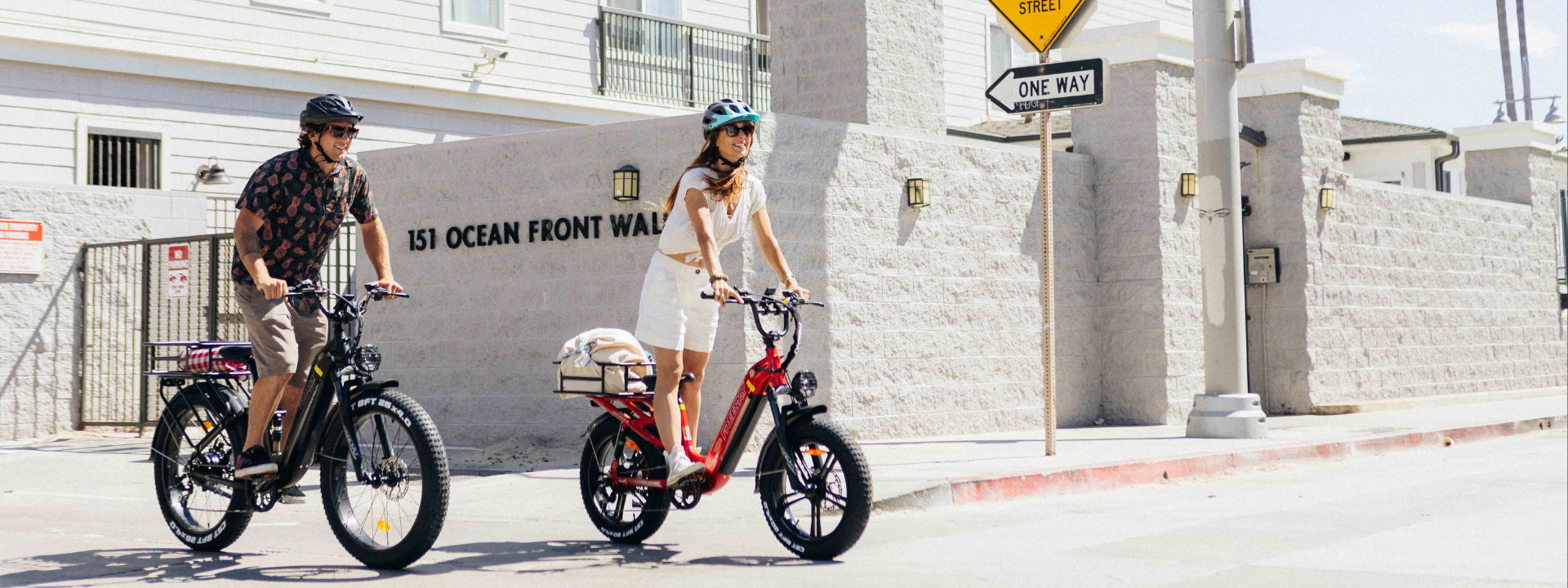
How to Get Your Ebike Ready for Spring: A Step-by-Step Guide
Apr 17, 2025
Spring is here, and with warmer weather on the horizon, it’s time to dust off your ebike and prepare for thrilling rides through blooming trails and sunlit streets. Whether your ebike has been hibernating all winter or you’ve braved the cold, a little TLC will ensure it’s safe, efficient, and ready to roll. Follow these steps to get your electric bike in top shape for the season! 1. Charge and Inspect the Battery Your ebike’s battery is its heart, so start here: Full Charge: Plug in the battery and ensure it reaches 100%. Lithium-ion batteries perform best when stored partially charged, but a full spring charge sets you up for success. Check for Damage: Look for cracks, swelling, or corrosion on the battery and connectors. If you notice issues, consult a professional before riding. Test Range: After charging, take a short test ride to gauge if the battery holds its usual charge. Reduced range may signal it’s time for a replacement. Pro Tip: Store batteries indoors during winter to avoid cold-related degradation. 2. Clean Thoroughly (But Gently) Winter grime, road salt, and dirt can damage components over time: Wash Frame and Wheels: Use a soft brush, mild soap, and a damp cloth to clean the frame, wheels, and drivetrain. Avoid high-pressure hoses, which can force water into electrical parts. Dry Completely: Wipe down the bike to prevent rust, paying extra attention to chains, gears, and brake rotors. Lubricate Moving Parts: Apply bike-specific lubricant to the chain, derailleur, and brake pivot points once dry. 3. Inspect Tires and Brakes Safety first! Ensure your stopping power and traction are ready: Tire Pressure: Inflate tires to the PSI listed on the sidewall (usually 30–50 PSI for most ebikes). Cold winter temps can cause pressure drops. Tread and Wear: Check for cracks, punctures, or worn treads. Replace tires if they’re bald or damaged. Brake Check: Squeeze brake levers to confirm they engage smoothly. For disc brakes, inspect pads for wear and rotors for alignment. Adjust or replace as needed. 4. Test Electrical Components Your ebike’s electronics need love too: Motor Engagement: Pedal assist and throttle should respond instantly. Unusual noises or lag could indicate motor issues. Lights and Display: Test headlights, taillights, and the control panel. Replace burnt-out bulbs or flickering LEDs. Wire Connections: Ensure all cables (motor, battery, display) are securely connected and free of frays. 5. Tighten Bolts and Fasteners Vibrations from riding can loosen parts over time: Critical Checkpoints: Handlebars, stem, seat post, and rack bolts should be snug. Use a torque wrench to avoid over-tightening. Wheel Alignment: Spin wheels to check for wobbles. Adjust spokes or visit a shop if wheels aren’t true. 6. Update Software (If Applicable) Many modern ebikes have firmware for motors or displays: Connect to App: Check the manufacturer’s app for updates to improve performance, battery efficiency, or features. 7. Gear Up for Safety Don’t forget your own readiness: Helmet Check: Replace helmets older than 3–5 years or after any impact. Refresh Accessories: Stock up on spare tubes, a portable pump, and waterproof gloves for spring showers. Final Step: Plan Your First Spring Ride! With your ebike tuned up, map out a scenic route to celebrate. Explore a new trail, revisit a favorite park, or commute to work with zero emissions. Spring is all about renewal—let your ebike adventures reflect that! Happy riding! 🌸🚴♀️
Read More
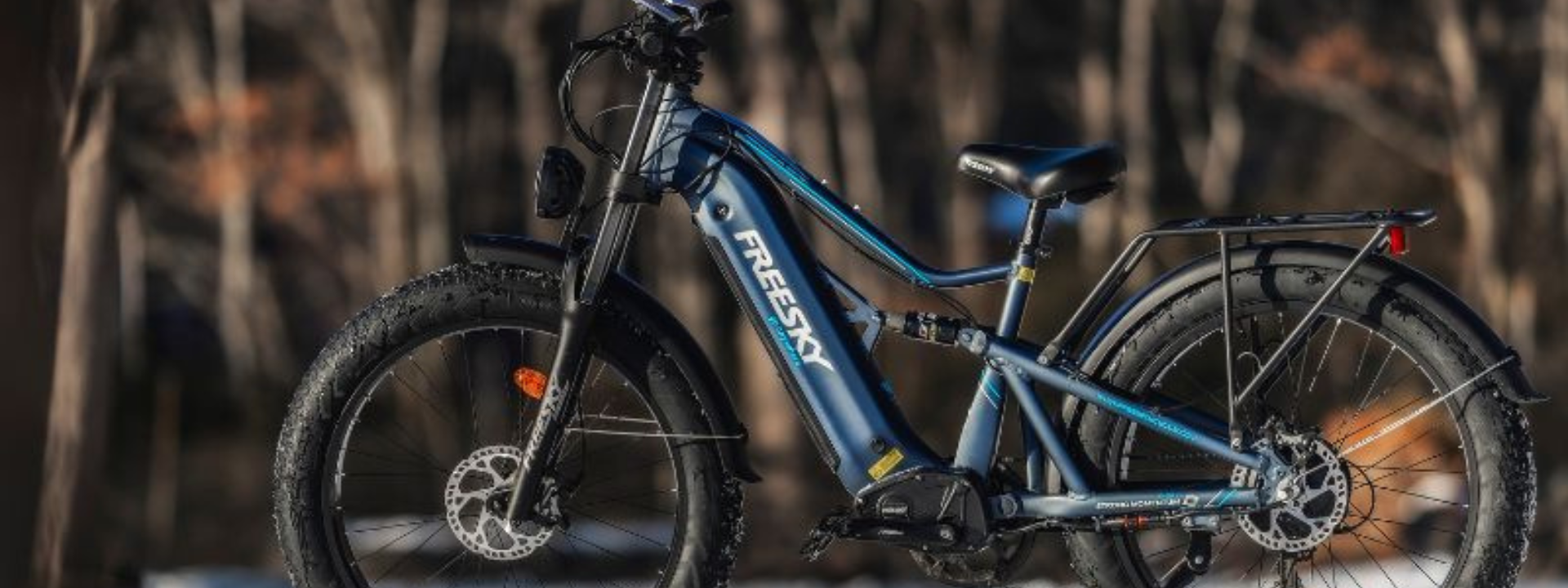
FREESKY Batteries: UL-2271 Certification and Our Commitment to Your Safety
Apr 07, 2025
At FREESKY, we believe that true freedom on the road begins with uncompromising safety. This philosophy drives every innovation we create, and our e-bike batteries are no exception. With the globally recognized UL-2271 safety certification at their core, FREESKY batteries are engineered to protect, perform, and empower your rides—no matter where they take you. Why UL-2271 Certification Matters The UL-2271 standard is not just a badge—it’s a promise. This rigorous certification, mandated for micromobility devices, subjects batteries to extreme real-world scenarios: Simulated short circuits and overcharging to prevent fire risks. High-temperature stress tests to ensure stability in demanding conditions. Impact and vibration resistance to guarantee structural integrity. Only batteries that pass these exhaustive trials earn the UL-2271 mark. For FREESKY, meeting this standard is non-negotiable. It’s our way of ensuring that every ride you take is shielded from unseen dangers. Safety by Design: The FREESKY Difference Our commitment to safety goes beyond certifications. Every FREESKY battery integrates dual safeguards: Advanced Battery Architecture: High-density cells optimized for efficiency and thermal management, minimizing risk even during peak performance. Smart BMS (Battery Management System): Constantly monitors voltage, temperature, and current to prevent overloads and balance energy distribution. This combination doesn’t just meet industry standards—it redefines them. We design batteries that are as resilient as they are powerful, because your safety is the foundation of every innovation we pursue. Built for Real Riders, Tested for Real Life Whether you’re weaving through city traffic or exploring off-grid trails, FREESKY batteries are built to adapt. The UL-2271 certification ensures reliability in unpredictable environments, while our technology delivers: Longer rides: Consistent power output for extended adventures. Zero compromises: No safety shortcuts, even at maximum performance. For urban commuters, it’s peace of mind. For adventurers, it’s confidence to push boundaries. For everyone, it’s freedom without fear. Why Choose FREESKY? In a market flooded with claims, FREESKY stands apart. We don’t just sell batteries—we deliver a safety-first legacy backed by: Transparency: Clear certification details and testing benchmarks. Innovation: Cutting-edge tech that prioritizes protection. Trust: A brand that values your safety as much as you do. Ride Safer. Ride Farther.With FREESKY’s UL-2271 certified batteries, every journey is powered by security and precision. Explore our range today and experience the confidence that comes with engineering excellence.
Read More
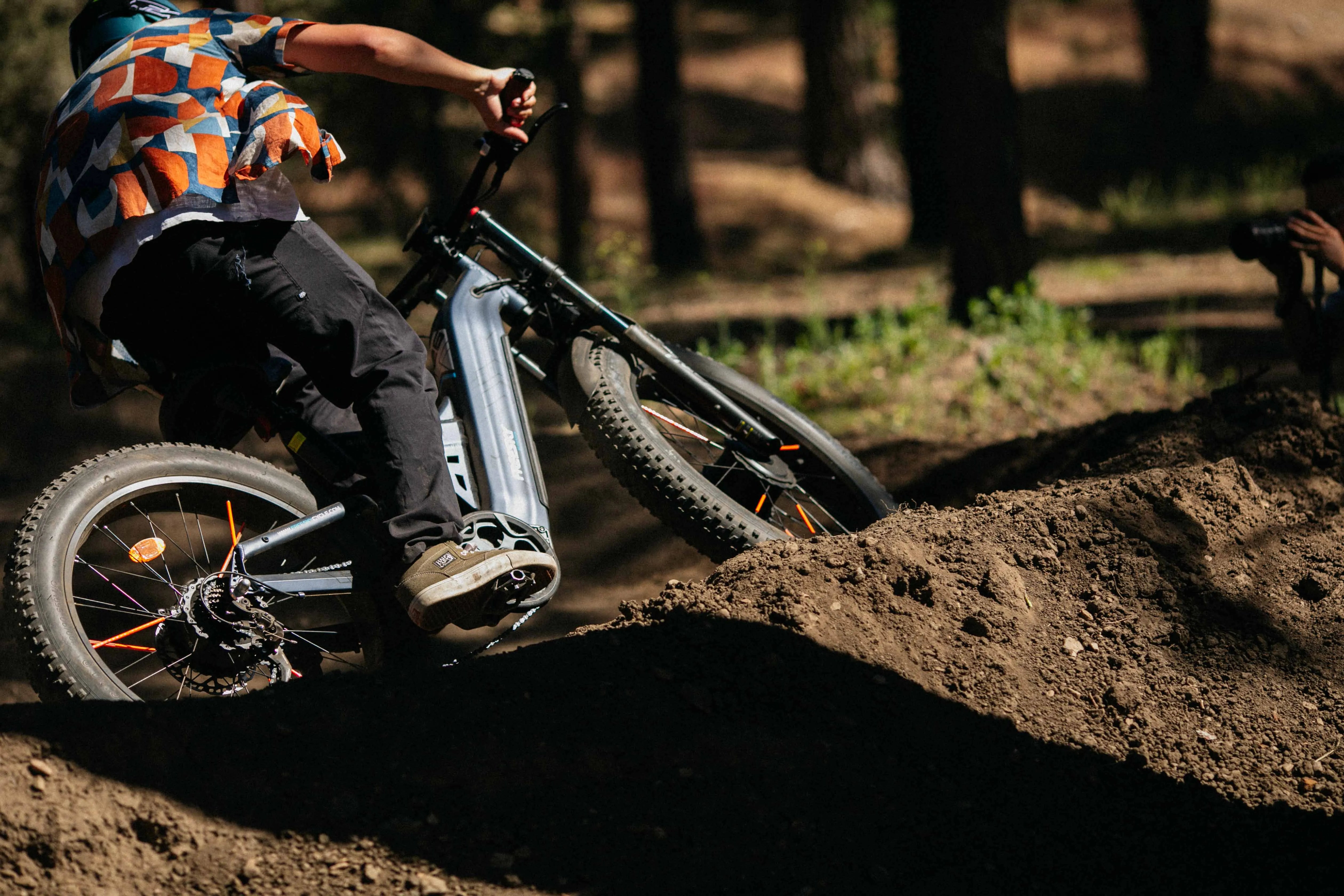
The Truth About Ebike Motor Longevity: What Every Rider Needs to Know
Apr 01, 2025
When investing in an electric bike, one of the most common questions that come up is: How long will the motor last? Like any machine, the lifespan of an ebike motor depends on several factors, including usage, maintenance, and the type of motor you choose. Whether you own a dual motor ebike for off-road adventures or a simple commuter ebike, understanding motor longevity is key to keeping your ride smooth for years. Factors That Affect Ebike Motor Lifespan Motor Type The type of motor you choose plays a big role in its longevity. Hub motors, which are built into the wheels, are common due to their simplicity and lower maintenance needs. Mid-drive motors are more complex but offer better performance for off-road conditions and steeper climbs. A dual motor ebike with two hub motors provides extra power but may also experience more wear over time due to the increased load on both motors. Maintenance Practices Proper ebike hub motor maintenance is crucial in prolonging the motor's life. Regularly cleaning the motor, ensuring that cables are in good condition, and avoiding exposure to extreme weather conditions all contribute to a longer-lasting motor. Specifically, checking for issues like ebike motor cable replacement when cables show signs of wear can prevent larger, costlier problems down the line. Riding Conditions The terrain and conditions you ride in also impact motor longevity. If you frequently ride uphill or carry heavy loads, your motor works harder, which can lead to wear over time. Additionally, if you notice ebike motor noise under load, this could be an indicator of strain or a need for motor servicing. It’s best to address these noises early on to avoid long-term damage. Frequency of Use Just like any machine, more frequent use means more wear and tear. If you’re an avid rider, your ebike motor will need more attention. You’ll likely have to replace parts, like the ebike motor cable, more frequently than a casual rider. How Long Do Ebike Motors Typically Last? On average, ebike motors can last between 3,000 and 10,000 miles (5,000 to 16,000 kilometers) or more. High-quality motors, when properly maintained, can even surpass these numbers. For example, with regular ebike hub motor maintenance, a well-maintained motor on a dual motor ebike could easily last 10 years or more. Common Signs Your Ebike Motor Needs Attention Noise under load: If you hear grinding or clicking sounds while the motor is working hard, it’s time for a check-up. Ebike motor noise under load is often the first sign of trouble. Loss of power: If your motor isn’t delivering the same level of power it used to, there might be issues with the motor components or wiring. Overheating: Frequent overheating can shorten your motor’s lifespan significantly. Make sure the motor is not pushing beyond its limits. Proactive Tips for Motor Longevity Regular Maintenance: Stick to a consistent maintenance schedule. Make sure to clean and lubricate your motor if recommended by the manufacturer. Cable Replacement: Don’t overlook the ebike motor cable. Regularly inspect cables for wear and replace them as needed to keep the motor running efficiently. Avoid Overloading: Be mindful of the load you place on the motor, especially for dual motor ebikes. This means avoiding carrying unnecessary weight or using your ebike in ways that push the motor to its limit unnecessarily. Conclusion While no motor will last forever, you can extend its life significantly with proper care and attention. Whether you own a single motor or a dual motor ebike, being proactive with maintenance, especially ebike hub motor maintenance and ebike motor cable replacement, will keep your ride in peak condition for years. Listen to your bike—if you hear ebike motor noise under load, don’t ignore it. Addressing issues early on will save you money and keep your motor running smoothly for the long haul.
Read More
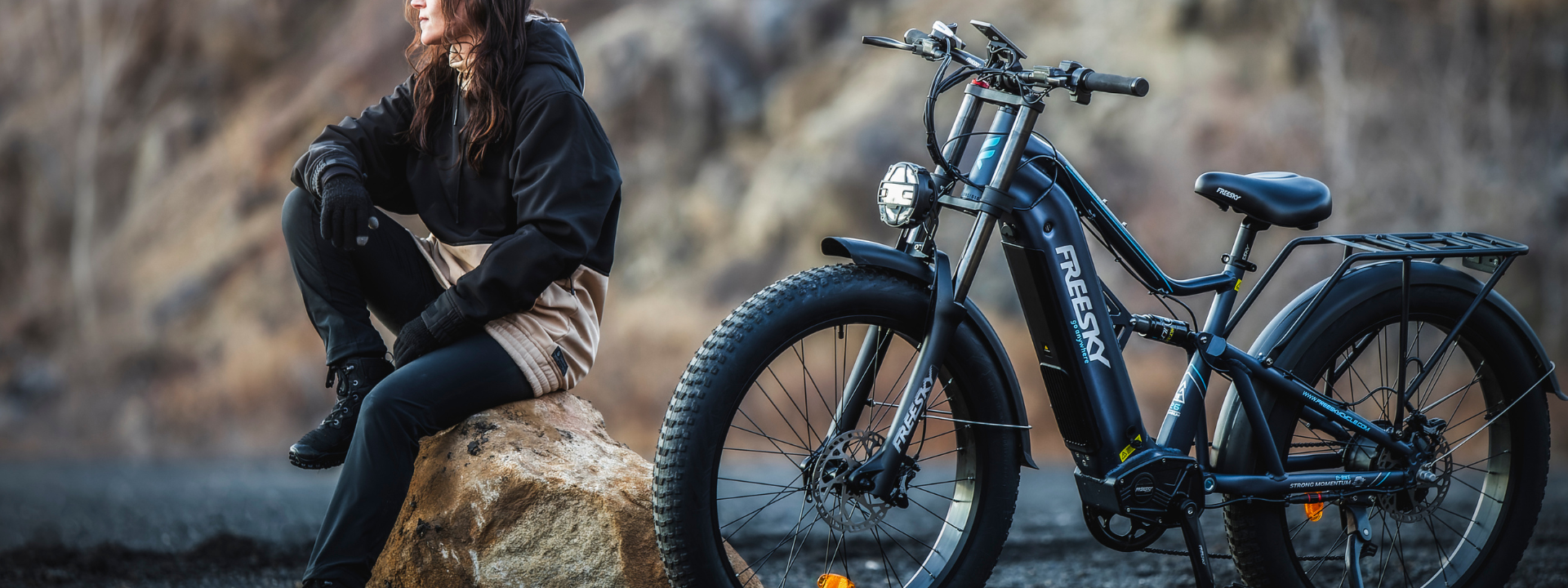
Electric Fat Tire Bikes: The Ultimate Long-Distance Adventure Machines
Mar 28, 2025
When it comes to exploring the great outdoors, electric fat tire bikes have carved out a unique niche. With their rugged design, oversized tires, and powerful motors, these bikes are built to handle everything from sandy beaches to snowy trails. But one question lingers for adventure enthusiasts: Can these beastly machines truly conquer long-distance journeys? Let’s dive into why fat tire e-bikes might just be your ultimate companion for epic rides. The Rise of Fat Tire E-Bikes: Built for the Unconventional Fat tire electric bikes aren’t just a novelty—they’re engineered for resilience. Their 4- to 5-inch-wide tires provide unmatched stability and traction, allowing riders to glide over terrain that would stall traditional bikes. Paired with robust mid-drive or hub motors and long-lasting batteries, these bikes are redefining what’s possible for off-grid exploration. But does this translate to endurance over miles? Key Features That Make Long-Distance Rides Possible Battery Power & RangeModern fat tire e-bikes are equipped with high-capacity lithium-ion batteries (500Wh to 1,000Wh+) that can deliver 40–80+ miles on a single charge, depending on riding mode and terrain. For extended trips, many models support dual-battery setups or portable chargers, ensuring you’re never stranded. Motor EfficiencyMid-drive motors, common in premium fat tire e-bikes, optimize power distribution and adapt seamlessly to shifting terrains. This efficiency reduces battery drain, making long rides more sustainable. Comfort & StabilityFat tires act as natural shock absorbers, smoothing out bumps on rocky trails or gravel roads. Combined with ergonomic saddles and adjustable suspension forks, these bikes minimize fatigue—a game-changer for multi-day adventures. All-Terrain VersatilityWhether you’re crossing desert dunes, navigating forest trails, or pedaling through mud, fat tires ensure consistent performance. This adaptability means fewer detours and more direct routes, saving time and energy. Challenges (and Solutions) for Long-Distance Riders While fat tire e-bikes excel in many areas, long-distance adventures require thoughtful planning: Weight: Fat tire e-bikes are heavier (60–80 lbs) due to their robust frames and components. However, pedal-assist modes and torque sensors offset this, making climbs and acceleration feel effortless. Aerodynamics: The wide tires create more drag at high speeds. Solution? Stick to moderate speeds (15–20 mph) to conserve battery and enjoy the scenery. Charging Infrastructure: Remote routes may lack charging stations. Pack a solar charger, opt for a dual-battery system, or plan stops near campgrounds/cafés with outlets. Real-World Success Stories Adventurers worldwide are proving fat tire e-bikes’ long-distance prowess: Desert Expeditions: Riders have traversed the Mojave Desert using fat tire e-bikes, leveraging their traction on sand and extended battery life to cover 50+ miles daily. Snowy Trails: In Nordic regions, riders tackle multi-day winter trails, where fat tires float over snow and motors combat harsh winds. Bikepacking: From the Rockies to the Alps, bikepackers pair fat tire e-bikes with lightweight gear, using eco-mode to stretch battery life across days. Tips for Planning Your Long-Distance Fat Tire E-Bike Adventure Test Your Setup: Do shorter shakedown rides to fine-tune tire pressure, battery usage, and gear loadouts. Prioritize Range: Use eco mode on flats, reserve higher assist levels for climbs, and keep tires properly inflated. Pack Smart: Invest in waterproof panniers, spare tubes, and a compact repair kit. Know Your Route: Use GPS apps to locate charging points and terrain-specific trails. Conclusion: The Future of Adventure Riding is Fat & Electric Electric fat tire bikes aren’t just surviving long-distance adventures—they’re thriving. With advancements in battery tech, motor efficiency, and durable components, these bikes empower riders to go farther, explore wilder landscapes, and redefine their limits. Whether you’re chasing horizons on a weekend getaway or embarking on a cross-country odyssey, a fat tire e-bike turns "impossible" into "unforgettable." Ready to take on your next big adventure? Explore our range of high-performance fat tire electric bikes designed to go the distance—wherever your journey leads.
Read More
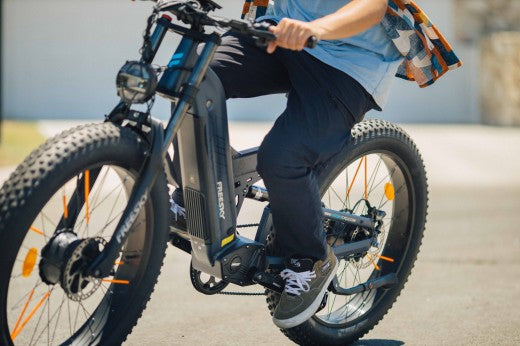
Warrior Pro M-530: The 2000W eBike Built for Epic Journeys and Unmatched Comfort
Mar 20, 2025
Ready to elevate your riding experience? The Warrior Pro M-530 is your ultimate companion for thrilling adventures and everyday exploration. Equipped with cutting-edge technology and designed for peak performance, this electric bike sets a new standard for versatility, power, and comfort. Dual Motor Power: 2000W of Pure Performance With two 1000W hub motors, one in the front and one in the rear, the Warrior Pro M-530 offers unparalleled power and control. Switch between single and dual motors with an intuitive handle button, letting you tailor your ride to any terrain. Whether conquering steep hills or cruising smoothly on city streets, this bike is built to perform. Ultimate Comfort with Dual Suspension Rough trails? No problem. The Warrior Pro features a dual suspension system with a lockable and adjustable front hydraulic downhill fork and rear suspension. Experience a smoother ride and superior handling, no matter how challenging the path ahead. Extended Range with SAMSUNG Battery Technology The Warrior Pro is powered by a 48V 25Ah SAMSUNG lithium battery, equipped with the latest Battery Management System (BMS) for optimal performance and safety. Enjoy: 50-85 miles per charge on a single motor 30-50 miles on dual motors With a massive 1200WH capacity, you’re ready for epic journeys. Plus, recharging takes only 6 hours, so you’ll be back on the road in no time. Speed and Control Hit speeds of up to 38 MPH, making every commute or adventure an exhilarating experience. Combined with the advanced suspension and dual motors, you’ll have the confidence to push boundaries. Smart Features for a Seamless Experience The Warrior Pro M-530 goes beyond performance with cutting-edge smart features: NFC Unlock: Say goodbye to keys and unlock your bike with a simple tap. Bluetooth Connectivity: Sync with the mobile app to access advanced settings, track ride data, and more. Smart Display: Stay informed with real-time data, from speed and battery life to motor status, ensuring you’re always in control. Why Choose the Warrior Pro M-530? This e-bike combines robust performance, innovative features, and unparalleled comfort. Whether you’re exploring off-road trails, speeding through your commute, or taking a leisurely ride, the Warrior Pro adapts to your needs. Get ready to explore without limits. The Warrior Pro M-530 isn’t just an electric bike—it’s your ticket to freedom.
Read More

Understanding E-Bike Waterproof Ratings: IP Codes Explained
Mar 18, 2025
Understanding E-Bike Waterproof Ratings: IP Codes Explained Not all e-bikes are created equal when it comes to water resistance. The key lies in their IP (Ingress Protection) ratings, which indicate how well components are sealed against dust and moisture. IP Ratings Decoded: First Digit (Solid Particle Protection): Ranges from 0 (no protection) to 6 (dust-tight). Second Digit (Liquid Protection): Ranges from 0 (no protection) to 9 (high-pressure/high-temperature water resistance). Most e-bikes have an IP65 or IP67 rating for critical components like motors and batteries, meaning they’re protected against low-pressure water jets or temporary immersion. Key Components to Check: Motor: Often IP65-rated, resistant to rain and splashes. Battery: High-quality batteries (e.g., Bosch, Shimano) typically meet IP67 standards. Display/Controller: Vulnerable points; ensure they’re at least IP65-rated. Pro Tip: Always check your e-bike’s manual for specific IP ratings. Budget models may cut corners on waterproofing! Can You Ride an E-Bike in the Rain? Short Answer: Yes, But... Most modern e-bikes handle light to moderate rain without issues. However, prolonged exposure to heavy rain, submersion, or pressure washing can damage electronics. Here’s how to ride safely: Verify Waterproof Ratings: Confirm your bike’s IP ratings (focus on battery and motor). Avoid Deep Puddles: Submerging components beyond their IP rating risks corrosion. Dry Your E-Bike Post-Ride: Wipe down the frame, battery contacts, and display to prevent water buildup. Use Fenders and Covers: Install mudguards to minimize water spray, and protect the display with a silicone cover. ⚠️ Critical Warning: Never charge a wet battery! Moisture + electricity = fire hazard. Always dry connectors first. Long-Term Maintenance for Rainy Climates Frequent wet-weather riding demands extra care to extend your e-bike’s lifespan: Lubricate Regularly: Water washes away grease; reapply chain lubricant after rainy rides. Inspect Seals: Check rubber gaskets on battery compartments and wiring for cracks. Store Indoors: Keep your e-bike in a dry place to avoid moisture buildup. Top Waterproof E-Bikes for Rainy Rides Rad Power Bikes RadRover 6 Plus (IP65-rated battery/motor) Specialized Turbo Vado SL (IP67 battery, sleek fender compatibility) Bosch-Powered Models (e.g., Trek Allant+, with industry-leading waterproofing) FAQ: E-Bikes and Water Exposure Q: Can I wash my e-bike with a hose?A: Use a damp cloth for daily cleaning. If hosing down, avoid direct sprays on electrical parts. Q: What if my e-bike gets caught in a storm?A: Dry it thoroughly afterward and inspect for water ingress (e.g., foggy displays). Q: Does waterproofing degrade over time?A: Yes—seals and gaskets wear out. Schedule annual maintenance checks. Final Thoughts E-bikes are built to withstand rain, but their resilience depends on design quality and rider precautions. By choosing a well-rated model, avoiding extreme conditions, and performing routine maintenance, you can confidently pedal through drizzles and downpours. Optimize your ride, rain or shine!
Read More